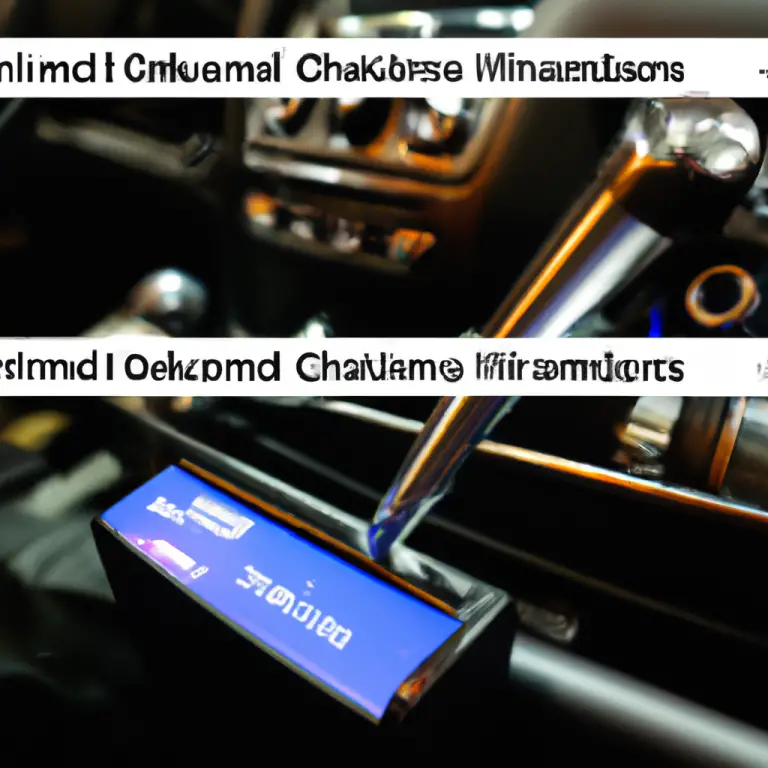How Do I Check My Ford Warranty? Step‑by‑Step VIN Lookup Guide
As a Ford owner, understanding your vehicle’s warranty status is essential for managing repairs, maintenance, and even resale value. Whether you’re a new Ford buyer, a long-time enthusiast, or a DIY mechanic, knowing how to check your Ford warranty can save you time and money. In this guide, we’ll walk you through the process of checking your Ford warranty status, explain what your warranty covers, and provide tips for what to do if your warranty has expired. Let’s get started!
What is a Ford Warranty?
When you purchase a new Ford vehicle, it comes with a standard warranty that provides coverage for various components. Here’s a quick overview of the main types of warranties offered by Ford:
- New Vehicle Limited Warranty: Covers most parts of your vehicle for 3 years or 36,000 miles, whichever comes first. This warranty protects against defects in materials or workmanship.
- Powertrain Warranty: Focuses on critical components like the engine, transmission, and drivetrain for 5 years or 60,000 miles.
- Corrosion Warranty: Protects against rust-through on body panels for 5 years with unlimited miles.
- Emissions Warranty: Covers emissions-related components, with durations varying by state (typically 2-8 years).
- Safety Restraint Warranty: Covers airbags and seat belts for 5 years or 60,000 miles.
- Hybrid/EV Warranty: Covers unique hybrid and electric vehicle components, such as the high-voltage battery, for 8 years or 100,000 miles.
These warranties ensure that your Ford is protected against manufacturing defects during the specified period. However, they do not cover normal wear and tear, routine maintenance (e.g., oil changes, tire rotations), or damage from accidents or misuse.
For a deeper dive into Ford warranties, check out our article on Understanding Ford Extended Warranties.
Why Should You Check Your Ford Warranty Status?
Checking your Ford warranty status is important for several reasons:
- Repairs and Maintenance: Knowing if your vehicle is still under warranty can help you avoid unexpected repair costs. For example, if your powertrain warranty is active, engine or transmission repairs may be covered.
- Selling Your Vehicle: An active warranty can increase your vehicle’s resale value and appeal to potential buyers, as it offers assurance of coverage for future repairs.
- Peace of Mind: Understanding your coverage helps you plan for future maintenance and repairs, ensuring you’re prepared for any issues that may arise.
- DIY Mechanics: If you’re performing your own repairs, knowing what’s covered can guide your decisions about parts and services.
Regularly checking your warranty status keeps you informed and helps you make smart decisions about your Ford’s care.
How to Check Your Ford Warranty Status
Checking your Ford warranty status is a straightforward process that can be done online using your Vehicle Identification Number (VIN). Follow these steps to get started:
Step 1: Locate Your VIN
Your VIN is a 17-character alphanumeric code that uniquely identifies your vehicle. You can find it in the following locations:
- On the driver’s side dashboard (visible through the windshield)
- Inside the driver’s side door jamb
- On your vehicle registration or insurance documents
Make sure you have the full 17-character VIN before proceeding. If you’re unsure how to find or decode your VIN, read our guide on How to Decode Your Ford VIN.
Step 2: Visit the Official Ford Warranty Checker
Go to the official Ford website’s warranty check page at Ford’s Warranty Support Page. This is the most reliable way to check your warranty status directly from Ford. You may need to log in to your Ford Owner account or simply enter your VIN directly on the page.
Step 3: Enter Your VIN
On the warranty check page, locate the input field for your VIN. Type in your 17-character VIN and click the “Check Warranty” button (or similar). Ensure the VIN is entered correctly, as errors can prevent the system from retrieving your warranty information.
Step 4: Review Your Warranty Details
After submitting your VIN, you’ll receive a report showing:
- Whether your warranty is active or has expired
- The expiration date or mileage limit for each warranty type
- The types of coverage still valid (e.g., bumper-to-bumper, powertrain, extended warranty)
- If applicable, details of any Ford Protect Extended Service Plan you may have purchased
Take note of this information for your records, especially if you’re planning to sell your vehicle or need to reference it for repairs. If you encounter issues, such as an invalid VIN, double-check your entry or contact Ford Customer Support at 1-800-392-3673.
Alternative Ways to Check Your Ford Warranty
If you’re unable to use the official Ford Warranty Checker, there are alternative methods to check your warranty status:
- Third-Party Services: Websites like vincheck.info offer free warranty checks by VIN or license plate number. These services provide details such as warranty start and end dates and covered components. While convenient, always verify the information with official Ford sources for accuracy.
- Contact Your Dealership: Your local Ford dealership can provide warranty information. Call or visit with your VIN, and they can look up your warranty status. This is particularly useful if you don’t have internet access or prefer speaking to a representative.
- FordPass App: Some Ford owners report that warranty information, including extended warranties, may appear in the FordPass app under the “Service” section. However, this may not always be updated immediately, so confirm with your dealership if the app shows no extended warranty details.
While third-party services and apps are helpful, the official Ford tools and dealerships remain the most authoritative sources.
Understanding Your Ford Warranty Coverage
To help you better understand what your Ford warranty covers, here’s a detailed breakdown of the standard warranties:
| Warranty Type | Coverage Duration | Details |
| New Vehicle Limited Warranty | 3 years or 36,000 miles | Covers most vehicle components for defects in materials or workmanship. |
| Powertrain Warranty | 5 years or 60,000 miles | Covers engine, transmission, and drivetrain components. |
| Corrosion Warranty | 5 years (unlimited miles) | Covers rust-through on body panels; non-perforation corrosion covered for 3 years/36,000 miles. |
| Emissions Warranty | Varies by state (typically 2-8 years) | Covers emissions-related components to meet federal and state standards. |
| Safety Restraint Warranty | 5 years or 60,000 miles | Covers airbags and seat belts. |
| Hybrid/EV Warranty | 8 years or 100,000 miles | Covers high-voltage battery and unique hybrid/electric components. |
These warranties cover defects in materials and workmanship under normal use. However, they do not include:
- Routine maintenance (e.g., oil changes, tire rotations)
- Wear and tear (e.g., brake pads, tires)
- Damage from accidents, misuse, or non-Ford parts modifications
To maintain your warranty, ensure repairs are performed at authorized Ford service centers using genuine Ford parts. For more tips on keeping your Ford in top shape, read our article on Ford Maintenance Tips.
What to Do If Your Warranty Has Expired
If your Ford warranty has expired, you still have options to protect your vehicle:
- Ford Protect Extended Service Plans: Ford offers extended warranties like PowertrainCARE, BaseCARE, ExtraCARE, and PremiumCARE, which cover various components beyond the standard warranty period. These plans can protect against unexpected repair costs and are transferable to new owners, adding value to your vehicle.
- Third-Party Warranties: Some third-party providers offer extended warranty plans, which may be more affordable but vary in coverage and reliability. Research thoroughly before choosing a third-party option.
- Regular Maintenance: Even without a warranty, proactive maintenance can prevent costly repairs. Follow Ford’s recommended maintenance schedule to keep your vehicle in top condition.
To explore extended warranty options, visit Granger Ford’s Extended Warranty Options for a quote tailored to your vehicle’s needs.
Frequently Asked Questions (FAQ)
1. Is the Ford Warranty Checker free to use?
Yes, the official Ford Warranty Checker is free to use. You only need your VIN to access your warranty information.
2. Can I check the warranty for any Ford vehicle with a VIN?
Yes, as long as you have the VIN, you can check the warranty status for any Ford vehicle, whether it’s yours or one you’re considering purchasing.
3. What if my warranty has expired?
If your warranty has expired, you can explore extended warranty options like Ford Protect to continue protecting your vehicle from unexpected repair costs. Visit Granger Ford’s Extended Warranty Options for more details.
4. How can I transfer my Ford warranty to a new owner?
Ford warranties are transferable to subsequent owners, which can increase your vehicle’s resale value. To transfer your warranty, contact your Ford dealership for guidance on the process, which typically involves documentation and possibly a small fee.
Final Thoughts
Checking your Ford warranty status is a simple yet crucial step in maintaining your vehicle’s value and ensuring you’re covered for repairs. By following the steps outlined in this guide, you can quickly access your warranty information and make informed decisions about your Ford’s care. Whether you’re using the official Ford Warranty Checker, contacting a dealership, or exploring alternative methods, always prioritize reliable sources for accuracy.
Ready to check your Ford warranty status? Visit Ford’s Warranty Support Page to enter your VIN and get started. For additional Ford-related tips and resources, explore our website at fordmasterx.com.




